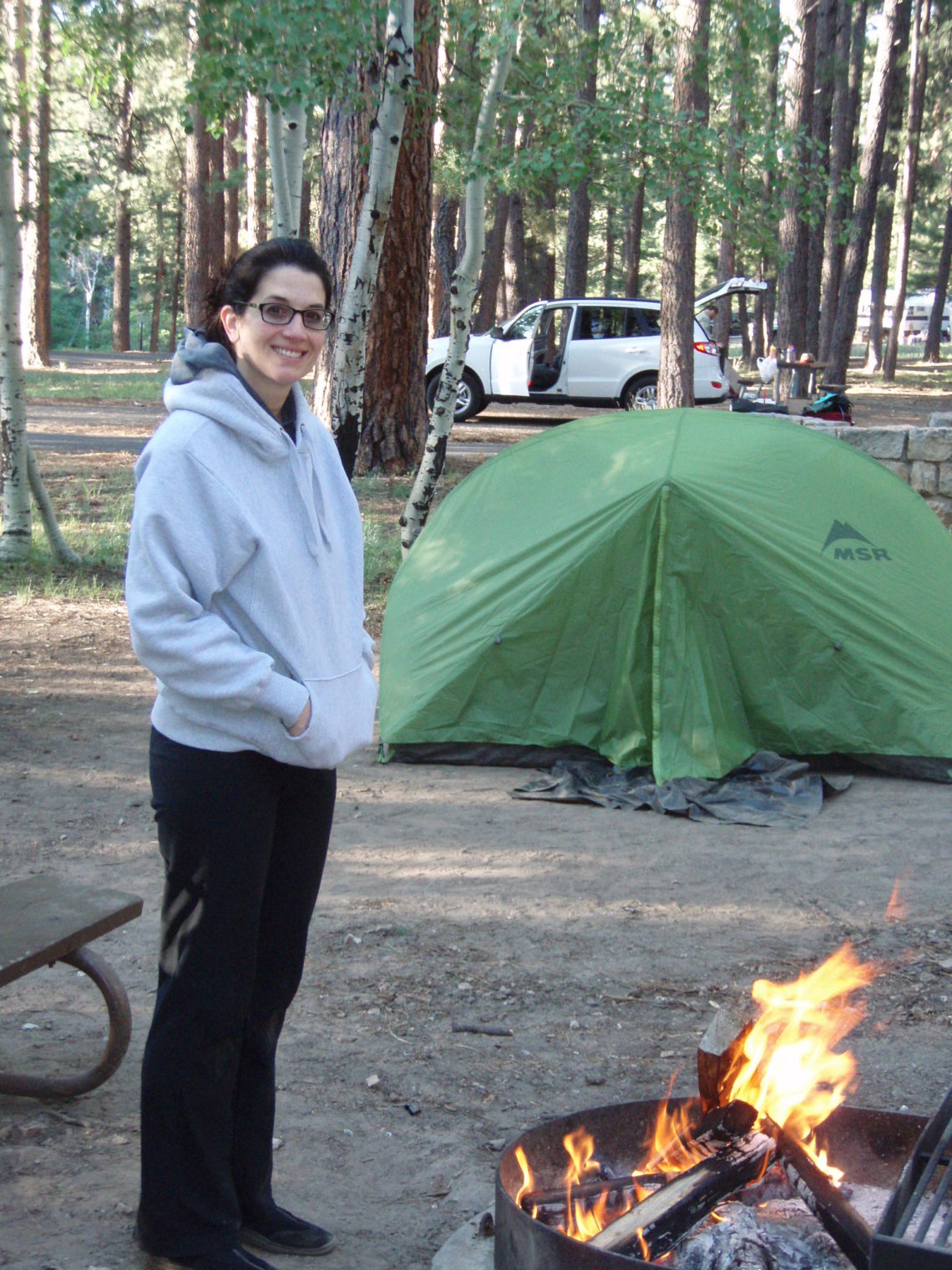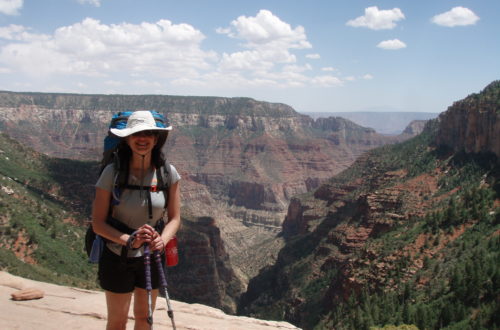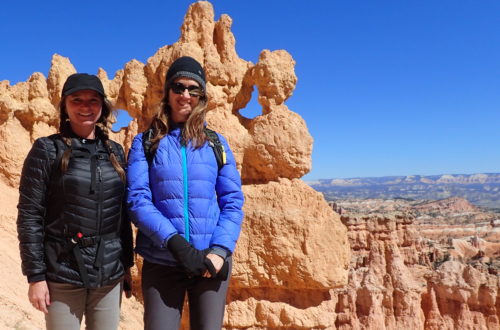
Hike the Grand Canyon?
My birthday wish was to hike to the bottom of the Grand Canyon. Having visited the South Rim of the canyon a few times before, I was enamored. I loved the foreboding walls, with their always-vertical slant. The colors of the rocks have an overall hue that is a peachy burnt orange, including all hues and shades. The remote trails and the iconic vistas call to that place in the middle of my core where desire stirs.
Friends of mine hiked to the bottom and sent me a postcard that was carried out by mules. I wanted to send MY friends and family that postcard.
I choose the North Kaibab Trail because I read that it is less crowded and more beautiful, but also more difficult than the other descents. It sounds like the perfect challenge.
In order to hike from the North Rim of the Grand Canyon, you need a backcountry permit issued by the National Park Service. These passes are in high demand and, for June, only given to about 55% of applicants. The only way to guarantee your spot is to reserve it six months in advance, at midnight, by fax. I try to get one for May, but am denied. That then translates to being near a fax machine at midnight on New Year’s Eve, preparing for a June trip. Once the journey begins, the coveted pass must be visible at all times. It is a simple printed form on regular paper, enclosed in a ziplock bag and affixed with a large safety pin. After the pass is mine, I would have proudly stuck it on my forehead.
May is the optimal time to hike the North Kaibab, as it has the most moderate temperatures. The North Rim is finally open after a long winter. June is flirting with extreme heat. During our visit, the lowest temperature is 37 degrees on the rim and the hottest temperature is 118 degrees at the bottom.
I plan and pack and unpack and pack and unpack and pack my backpack at home. The Trail House in Frederick is instrumental in helping with the equipment for this trip. They listen endlessly to every issue I have and have multiple solutions for my problems.
My load consists of military-style MREs (meals ready to eat), peanut butter, jelly, tortillas, granola bars, other mobile food options, a tent, sleeping bags, toiletries, walking poles, clothes, sunglasses, hats, water bladders, and water bottles. You can reserve a dinner and breakfast at Phantom Ranch, but any other nourishment must be carried in. All garbage must be carried out. I buy a large army duffle to protect my pack for the flight to Las Vegas.
I plan to use full sugar Gatorade to balance the energy expelled and to keep my blood sugar as even as possible. Because of my Type 1 Diabetes and the possibility of low blood sugars, I go overboard with food. My concern that I will deplete my nourishment outweighs the increasing bulk of my pack.
I bring only one frivolous item and that is the book Zen and the Art of Happiness. It is a 145-page book on how to be happy. The Grand Canyon seems like the ideal place to read it. I’ll save you the trouble, as the key to happiness can be condensed into embracing one mantra: “Everything that happens to me in my life happens so that I can benefit the maximum amount,” or more simply “Everything happens for my benefit.”
I read blogs about people sawing off the handle of their toothbrush to save a half an ounce of weight. I don’t subscribe to this extreme weight cutting, but I try to be smart.
The main culprit is water. A gallon of water weighs eight pounds. It is recommended to drink a gallon a day when hiking in the Grand Canyon. The bladder in my backpack holds 3 liters and weighs almost 6.5 pounds. There is water available at various spots, including Cottonwood Campground and Phantom Ranch, but only between May and October. You do need to be prepared in case the water supplies aren’t working.
In the end, my bag weighs 45 pounds.
I devour the book Death in the Grand Canyon. Again to save you the trouble, the most common way to die is to be a drunk twenty-something man who decides to pee over the edge and falls in. I want to understand the mistakes of others to avoid them myself.
My emotional state is tentative and slightly anxious. I’m not sure how worried I need to be about doing this hike with diabetes. Once you are far enough below the rim, if you have an emergency, the only way out is by helicopter. The rumored cost of a medical flight is $3000.
There is sparse cell service. In fact, I left my cell phone in the car.
I am mindful of the extreme physical demands. The Grand Canyon has an inverse stress to it. It is the opposite of hiking a mountain. You are doing the easier part first- hiking down- but your pack is at its fullest. The hardest part- the hike out- is done with a lighter pack, but it occurs at the end of four exhausting days. The only time you can fully relax is when you are out of the canyon.
We fly into Las Vegas and drive a rented convertible to the North Rim. We camp overnight at the North Rim Campground. It is cold at 37 degrees. I don’t sleep much because of stress, cold, discomfort, and jet lag. I wake tired and jittery. Although it seems dramatic in hindsight, I wonder if I will see above the rim again.
At first light, we pack the tent and reorganize our backpacks. Once we feel re-grouped, we start the walk towards the rim, very quiet and full of our own thoughts.


You May Also Like

Hiking INTO the Grand Canyon
January 30, 2018
The Best of Colorado, Utah and Arizona
January 16, 2018
